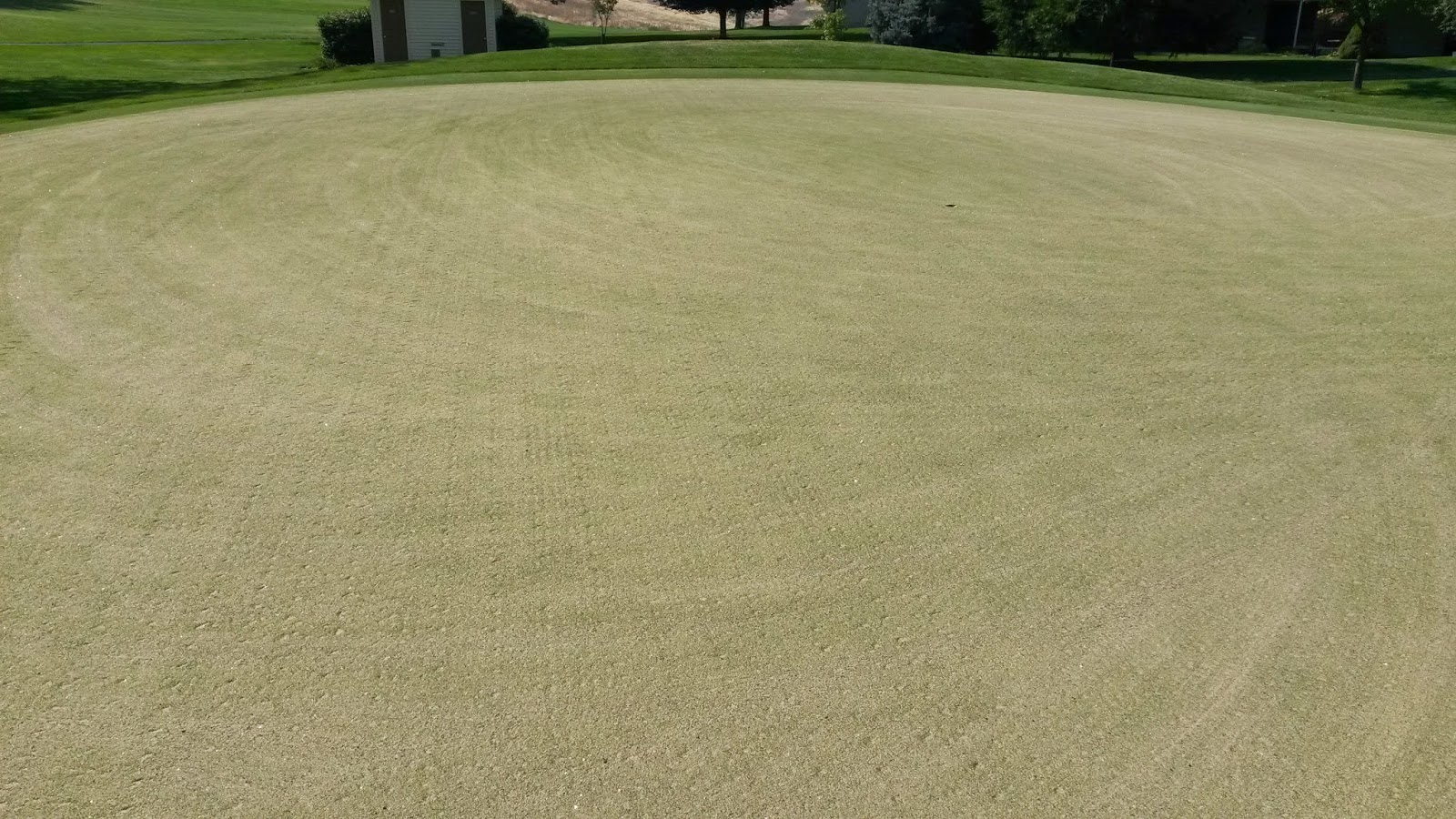On the golf course, the agronomy team has been very busy the last month with leaf clean-up and setting the golf course up for winter play. The toughest part about having a northern golf course open all year around is having traffic on dormant turf. In the growing season the turf continues to re-grow itself and we play on a new surface everyday, but in the winter it is the same leaf tissue that continues to get the cart and foot traffic all winter.
On tee surfaces, we combat this issue by using matts on the par 3 tees.
The remainder of the tees are set in 1 location and left in the same spot for the winter. In the spring it is better to have one area of the tee box that is really beat up and needs to be seeded, compared to the entire tee having some damage. This way in the spring we can use the 75% of the tee that is perfect, and just overseed that small portion that received the heavy traffic from winter. On the greens, I set up 3 cups, the 1 we are playing today has the pin and the other 2 have black discs over them. This way we can got out and change cups even when it is cold and frozen and still move the traffic around the green.
It has worked very good for us in the past and this year we set the golf course up for winter play the same way.

.jpg)





.JPG)









.JPG)





























.JPG)
.JPG)

.JPG)
.JPG)



